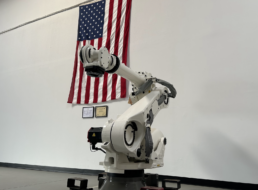Space is the ultimate high ground, and like a modern-day Sun Tzu, Space Force chief Gen. Chance Saltzman has issued his Art of Space War.
The recently released document—Space Warfighting: A Framework for Planners—spells out the capabilities available to the US and allies if adversaries take them on in orbit.
The why: Winning a modern-day conflict requires a robust space-based attack and defense architecture, as shown by Russia’s cyberattack to cripple Ukrainian comms at the start of its invasion.
As a result, the Space Force won’t just play a supporting role in future conflicts—it will be at the tip of the spear.
The how: Space Warfighting outlines the methods by which the US will maintain space control—offensive and defensive counterspace actions to ensure that allied space infrastructure isn’t compromised in the event of a conflict.
- Offensive actions include: Orbital strikes through kinetic or non-kinetic attacks to disrupt an enemy’s space capabilities; interrupting the flow of data in orbit to render an adversary’s capabilities ineffective; and terrestrial strikes on an enemy’s launch vehicles, space systems, or space-based command infrastructure.
- Defensive actions focus on: Protecting allied space capabilities, through two main sets of actions. Active defense operations include escorts, counterattacks, or suppressions of enemy targeting systems. Passive defense modes include threat warning systems, military deception operations, enhanced maneuverability capabilities, and infrastructure that’s built with hardening, resiliency, and redundancy in mind.
The when: US forces need to get on the same page now, so that when the space hits the fan, troops don’t hesitate, according to the document.
For future conflicts, commanders must develop a deep knowledge of enemy space capabilities, make decisions quickly under clear rules of engagement, and ensure American assets can quickly recover after an attack.
“The Guardian must understand the principles and, when necessary, break the rules to uncover the military genius in spacepower,” Saltzman wrote.




